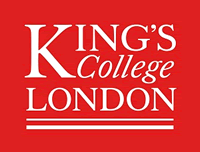We aim to understand how prenatal therapy can be used to treat sickle cell disease (SCD) by developing a nanoparticle delivery system to encapsulate gene-editing tools in human and mouse fetal haematopoietic stem cells (HSCs) and delivery methods in a mouse model of SCD.
This project merges nanomedicine, CRISPR/CAS-based gene editing, and in utero therapy, to develop gene therapy for an untreatable disease. The student will have the opportunity to work with experts in nanodelivery systems1 , gene editing2 and fetal medicine3,4, alongside a leading, image and sensor manufacturing company ISDI5. The student will acquire cutting-edge skills across disciplines, applying frontier science to a key challenge in disease treatment. The industrial partnership will provide translatable skills in the private sector and an opportunity to establish a cross-cutting collaboration and network.
SCD is a severe, progressively debilitating, and life-threatening genetic disease, which results in frequent vaso-occlusive episodes and anaemia, causing chronic organ damage, infection and stroke in children and adults4. The development of non-invasive prenatal diagnosis using circulating fetal DNA from the mother's blood allows the early detection of congenital fetal diseases from ten weeks of gestation6,7. Following diagnosis, currently, the two main options are 1) termination of pregnancy or 2) careful monitoring and delivery followed by post-natal treatment where appropriate. This proposal addresses the development and generation of knowledge on a potential third option; in utero treatment of SCD by delivering NPs encapsulating a gene editing system (NP-Editor)8–10 . It is possible to safely use NPs to encapsulate a gene editor to correct the gene defect in the fetal haematopoietic niche8,11. These in vivo genetically corrected HSCs will naturally migrate to the bone marrow and subsequently offer life-long therapy 12. We published proof-of-principle of prenatal HSC gene therapy, using a LV, by demonstrating post-natal rescue of a mild form of beta-thalassaemia in a murine model system by delivering a beta-globin vector (GLOBE LV) to the fetal liver at mid-gestation13.
In the project, the student will develop nanoparticles with liver tropism and high transfection capacity14, to home to HSC and aim to develop nanoparticles which pass uninterrupted the feto-maternal interface. The nanoparticle will be tested on human and mouse placentas. The student will work with the company to develop sensor/imaging tools to detect the nanoparticle in vivo.
They will assist with the development of tracing tools for the bioengineered nanoparticles in vivo. The student will support a system development to improve current laboratory tools to monitor nanoparticles and enable CT scans of the specimen under test, which will give further clues and understanding of congenital disorders affecting the fetus. The data produced in this project will need to be analysed using statistical methods and artificial intelligence. The student will enrol in the Machine Learning for Health and Bioinformatics and the Introduction to the R software online courses to help them analyse the data. They will expand their research skills by attending gene editing and nanoparticle courses like the Genome engineering course by the European Molecular Biology Laboratory (EMBL). To enhance the student’s personal development skills and knowledge, we plan to encourage them to attend the Project Management Leadership Masterclass offered by KCL and the Research Team Leadership in Changing Times course by the Advance HE. The student will also attend biweekly progress meetings will enrol to attend a course on Introduction to Public engagement. Furthermore, the student together with the team will be attending annual conferences where they will present any new project findings. In this way, they will network with other fellow researchers who might be working in the same area, exchange ideas and collaborate. In addition, during academic conferences, the student will take the opportunity to attend training courses such as the 'Grant Writing Clinic' and 'Career Development Workshops'.
Department:
Women and Children’s Health, School of Life Course and Population Sciences
Centre for Craniofacial & Regenerative Biology, London Centre for Nanotechnology
Funding:
The MRC DTP only offer 4-year fully funded studentship awards including a stipend, tuition fees, research training and support grant (RTSG) and a travel and conference allowance.
Stipend: The rate for academic year 22/23 is £22,168. This is a tax-free payment made to the student.
Tuition fees: The studentship award covers the full tuition fee amount.
Research training and support grant (RTSG): £6,400 per year. Can also be known as bench fees, which is a contribution towards consumable costs of training research students.
Travel and conference allowance: £300 per year. This is a contribution to the costs of attending scientific conferences, workshops, or visits to collaborators.
Flexible Supplement: Available to students funded by the MRC, this can help fund a wide range of research and training activities.
Funding source: This project is co-funded by the MRC and the Industry Partner ISDI - Image Sensor Design & Innovation.
Application Web Page:
Full details on how to apply here: https://kcl-mrcdtp.com/apply/application-process/

 Continue with Facebook
Continue with Facebook



